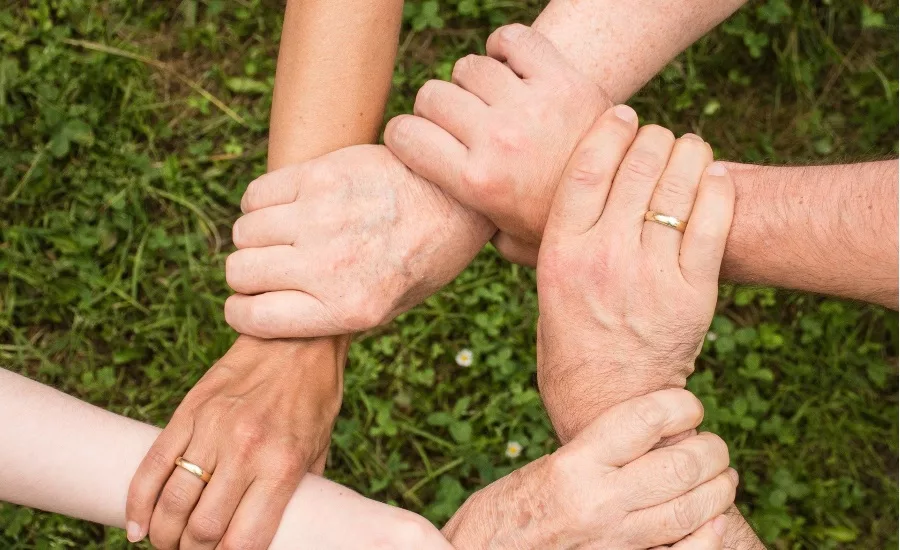A matter of trust

Today’s social and economic uncertainties have made many Americans wary. Questions that many of us are asking ourselves these days focus on our personal safety and the safety of our loved ones. Questions many of us are asking ourselves include, “How safe is my family if we go out to a restaurant?”, “Is my child safe going to school?” and, “Is my personal security assured when I clock into work each morning?” As we approach 250,000 deaths related to Covid-19 and a growing likelihood that someone knows someone that has tragically passed, the question a lot of us ask is, “Could I die?”. That’s not a question we were asking ourselves on a routine basis and today we are.
A recent poll, Navigate360 | Zogby Safety and Wellbeing Poll, asked American adults and16- and 17-year-olds what impact today’s health and economic crises has had on their sense of safety, and some of the results are startling.
According to the results of our poll, Americans feel that safety at work, in school and in public places is no longer guaranteed. More than 70% of Americans feel safe only at home, and even more alarming is that most American adults (59%) and teenagers (61%) believe that they or someone close to them are likely to encounter a violent critical incident, experience self-harm, or contract COVID-19 or another contagious disease.
All of these beliefs can have a significant impact on the willingness of Americans to return to “business as usual,” especially given that the majority of adults (64%) ages 25 to 34 believe that an event such as contracting COVID-19 or experiencing a critical violent incident could prevent them from fulfilling their life goals in education or career. This sentiment was echoed by more than half (54%) of the teens we surveyed.
A Crisis of Confidence
Of the adults who responded to our online poll, 56% do not think their office has an emergency plan. Additionally, 55% of the 16- to 17-year-olds who responded feel similarly about their schools. More than half (51%) of adults and students surveyed think their schools and offices do not invest enough in safety measures.
Aside from representing a crisis of confidence in our communities’ leaders, these beliefs pose an interesting question for society at large: Are we fine feeling unsafe in our daily lives, and if we’re not, how do we take concrete steps to regain our confidence in schools, workplaces, and in the world at large?
We must do more than simply acknowledge the problem in front of us; we need to work to understand this distinct lack of trust so that we can define ways to rebuild people’s confidence in safety. People are feeling unsafe at work and at school because they worry these institutions don’t have the necessary security measures in place. What can business and school leaders do to communicate the myriad safety precautions they’ve been taking?
As people become more distrustful of the world around them, enterprise security leaders must work diligently to bring us together. To regain the public’s trust, schools and businesses need to create a “culture of health and safety” that empowers individuals to live to their full potential — without fear. This culture of safety must respect and prepare for the real dangers that exist as it aims to implement and communicate effective policies that ensure everyone is safe and healthy — physically, emotionally and socially.
Beyond the Pandemic
Although COVID-19 is the top safety topic on everyone’s mind, even after a vaccine is approved, we’ll have to grapple with the pandemic’s lasting effects on mental health. Experts predict an increase of 75,000 “deaths of despair” (including 8,000 suicides) this year alone, and we’ve seen an increase in violent assaults across the country. Safety and security leaders must remain vigilant in creating positive change by rethinking the concept of safety and what it means to feel safe in a constantly changing world.
It is important to remember that developing a culture of safety doesn’t involve simply implementing one or two solutions. It requires looking at all aspects of your organization's culture and systems, from every angle, to ensure each member can grow to their full potential. A holistic culture of safety rests on three pillars: physical, emotional and social safety. To establish a comprehensive culture of safety, all three areas must be established and respected.
Breaking It Down
Physical safety, which includes emergency drills, building access and safety plans, is the most common safety precaution taken by schools and offices, in part because it is often required by law. With remote work becoming the norm, cyber security must take priority if access to proprietary information is to be controlled. Additionally, consideration must be given to safety in the home which is now an extension of the office.
Emotional and social safety are two key areas that are frequently overlooked in safety plans, but they are critical for preventing potentially violent incidents. Creating a culture of emotional and social safety requires leaders to invest in their community’s mental health and address issues such as stress, depression, bullying, harassment, anxiety and addiction. This broader view of security starts with open communication and community participation. School and workplace leadership must play a critical role in identifying concerning behaviors, providing support services to staff, and fostering a culture of mutual respect and understanding.
Although the security needs for every business, school or public space are different, it’s clear that Americans are hungry for leadership that prioritizes health and safety. It may seem overwhelming to think about putting preventive strategies in place, but numerous tools exist that can help. Security professionals have ample opportunity to ensure that holistic safety and prevention measures are woven into our work and school cultures to rebuild our communities' trust and confidence.